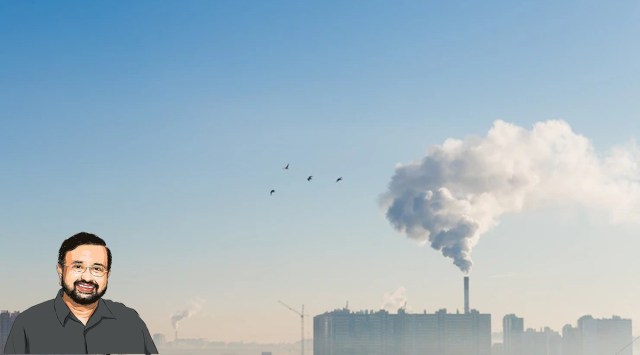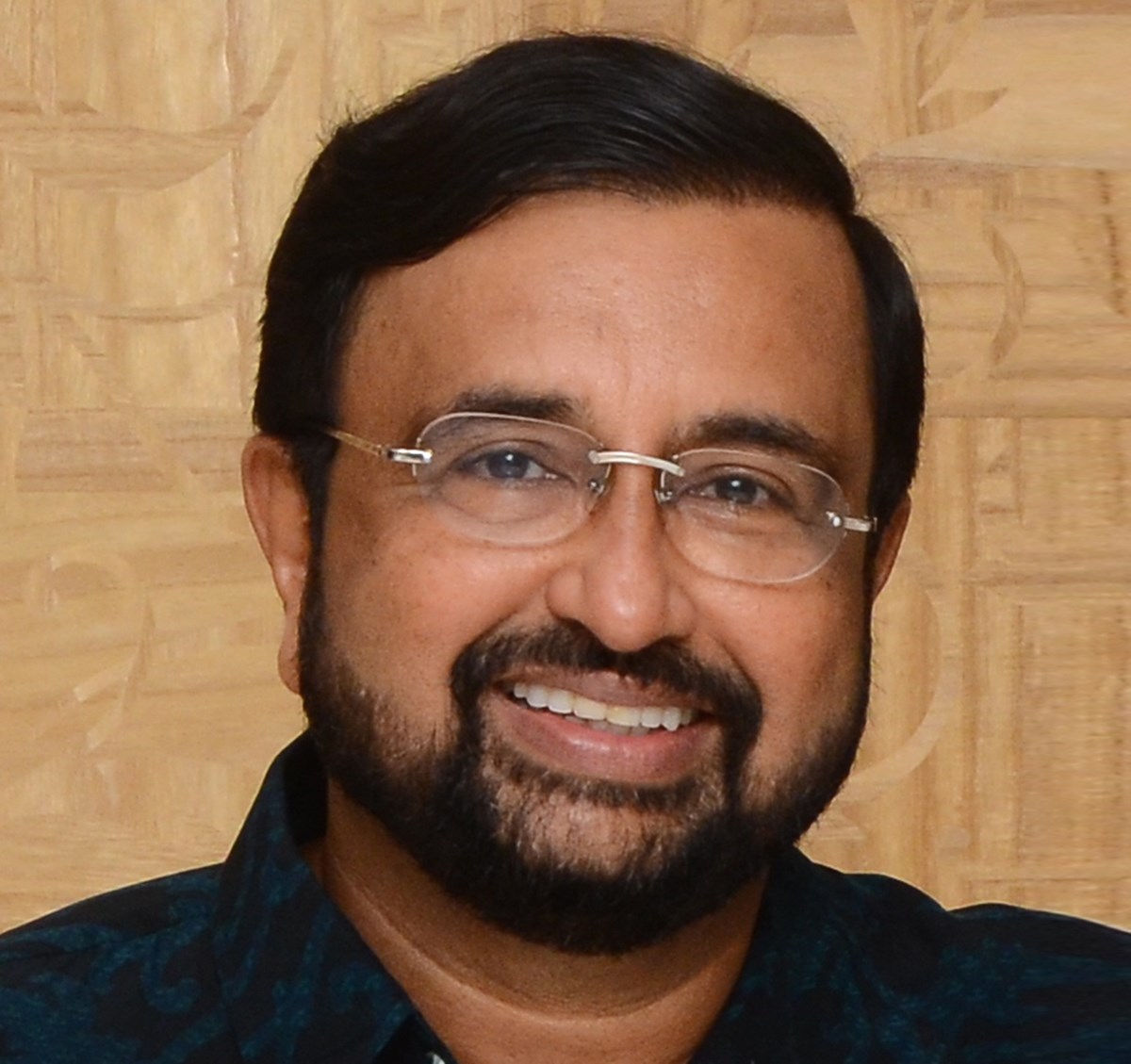- India
- International
How we are choking our health by ignoring air pollution in our cities: PM2.5 is raising risk of heart attacks, cancer and lung diseases
A recent study by the Jaslok-Fertile Tree International Centre with IIT Mumbai revealed secondary metabolites of phthalates derived from plastic products in the ovarian follicles of infertile women. In men, worldwide steadily declining sperm counts are attributable to pollutants, says Dr Rajesh M. Parikh, Director of Medical Research at Mumbai’s Jaslok Hospital & Research Centre
 According to the Lancet Commission on pollution and health, pollution was the leading environmental risk factor for disease and early mortality globally in 2022. (Source: Freepik)
According to the Lancet Commission on pollution and health, pollution was the leading environmental risk factor for disease and early mortality globally in 2022. (Source: Freepik) One of the fundamental assumptions in biology is that life works relentlessly to perpetuate itself. Our existence is predicated not only on the reproductive instincts of our species but also on an even more fundamental drive to survive. Another indisputable assumption is that humans are the most intelligent species on the planet. How does one reconcile these two assumptions with our relentless destruction of our own environment, one that not only poses a threat to the existence of our planet as we know it but also to the survival of our species. Are we self-destructive? Stupid? Both?
In 2009, paleontologist Peter Ward put forward a theory that he named the Medea Hypothesis after the character from Greek mythology who killed her own children. He argued that on a planetary scale, life is inherently self-destructive, citing previous mass destructions to support his theory. Throughout our planet’s history, he pointed out, life has been its own worst enemy. It thrives up to a point and thereafter begins the process of its own destruction.
According to the Lancet Commission on pollution and health, pollution was the leading environmental risk factor for disease and early mortality globally in 2022. It accounted for nine million premature deaths, or one in every six deaths worldwide. According to a WHO estimate, air pollution causes roughly seven million deaths globally each year. We have more people dying of air pollution every year than have died of COVID-19. Air pollution-related health costs are projected to be $8.1 trillion annually, or 6.1 per cent of the world’s GDP. Which species causes almost all of this environmental damage? Easy answer.
An estimated 1.24 million fatalities in India each year are attributed to air pollution, of which 0.67 million are caused by particle pollutants. Mumbai is currently ranked second among the cities with the worst air quality worldwide. Mumbai’s Air Quality Index (AQI) is a minimum of 177 and a maximum of 320, worse than that of Kolkata (at rank 15) and Delhi (ranked 23rd). This equates to smoking anything between 15 and 22 cigarettes a day. Since October 2022, when the AQI was recorded at 79, Mumbai had a single day of “satisfactory” air. Mumbai saw 12 days of “satisfactory” air between November and January the winter before, giving residents some reprieve. This has not been the case during the current season.
Dr Gufran Beig, founder project director of the System of Air Quality and Weather Forecasting and Research (SAFAR), has attributed the current deteriorated air quality to be due to a combination of man-made emission and weather-related events. Unlike other land-locked cities, Mumbai is a coastal city with a natural advantage for air purification. Stronger surface winds promote quicker dispersion and wind reversal cycles by powerful sea breezes, which remove contaminants off the land. Our current predicament, however, has shown that nature has the power to revoke its favour. According to Dr Beig, unprecedented meteorological events linked to climate change, including stagnation of wind circulation, may have had a significant impact.

Road or construction dust, such as that emitted by the coastal road, metro construction and unprecedented redevelopment activity, accounted for 71.5 per cent of the particulate matter (PM) load in Mumbai’s air, according to research by the National Environmental Engineering Research Institute (NEERI) and the Indian Institute of Technology (IIT), Mumbai. Additionally, unregulated industrial work is being done in Thane, Kalyan, Dombivli and Taloja, which is considerably polluting the air and hurting Mumbai as well, analogous to crop burning in Haryana and Punjab impacting Delhi’s AQI.
Breathing in fine particulate matter, or PM2.5, which is also known as PM5, can worsen chronic lung conditions, impair lung development, raise the risk of breast cancer, accelerate the onset of neurological conditions like Alzheimer’s and Parkinson’s, and increase the risk of heart attacks and stroke. According to a recent study, heart attacks in the US considerably decreased when PM2.5 levels dropped in the early stages of the COVID -19 pandemic.
Around the world, an estimated 90 per cent of children spend their formative years inhaling contaminated air, which can have long-term effects. According to estimates from the WHO, more than 500,000 children under the age of five passed away in 2016 from respiratory diseases brought on by indoor and outdoor air pollution.
A recent study conducted by the Jaslok-Fertile Tree International Centre with IIT Mumbai revealed secondary metabolites of phthalates derived from plastic products in the ovarian follicles of infertile women. In men, worldwide steadily declining sperm counts are attributable to pollutants. Pollution literally impacts the future survival of our species.
The Brihanmumbai Municipal Corporation (BMC), the richest civic body in the nation, released its ‘largest-ever’ budget of Rs 52,619 crore. Yet less than 0.05 per cent of it was allocated to one of Mumbai’s most urgent problems: its deteriorating air quality. The National Clean Air Programme, which the Indian government announced in 2019, promises to enhance quality of life while reducing particulate matter pollution by 30 per cent by 2024. However, things are only becoming worse rather than better.
In order to truly make an impact, changes will be needed at the international, national and the individual level. Maintaining precautions during transportation and the construction of infrastructure, restoration of green areas and rivers, creating low-emission zones, reducing and replacing transportation with green energy transport (electric automobiles and cycles) can go a long way to reduce the air pollutants. For example, Singapore aims to have 80 per cent of its population live within a five-to ten-minute walk of a metro station. In order to reduce air pollution, Oslo has banned vehicles from its city centre and replaced parking spaces with parks and bike lanes.
 Dr Parikh is Hon Neuropsychiatrist and Director of Medical Research at Mumbai’s Jaslok Hospital & Research Centre as well as Adj. Prof. of Psychiatry at The University of Iowa, US.
Dr Parikh is Hon Neuropsychiatrist and Director of Medical Research at Mumbai’s Jaslok Hospital & Research Centre as well as Adj. Prof. of Psychiatry at The University of Iowa, US.
The pandemic has taught us that we as humans are more adaptable to change than we could ever imagine. While most of us may consider it difficult if not impossible to give up luxuries or consider adopting a greener lifestyle, the change will be easier than we could imagine. In doing so lies the answer to whether despite being the most intelligent species on Earth, we are also the stupidest and the most self-destructive in the entire history of our planet.
(Dr Parikh is Hon Neuropsychiatrist and Director of Medical Research at Mumbai’s Jaslok Hospital & Research Centre as well as Adj. Prof. of Psychiatry at The University of Iowa, US. He has authored two best-selling books on COVID-19 and on Vaccination)
Must Read
Apr 27: Latest News
- 01
- 02
- 03
- 04
- 05








































